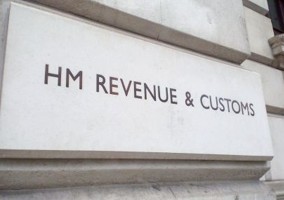Charities made £1.3bn from Gift Aid in 2021-22, a slight fall compared with the previous year, according to official figures.
Data released yesterday by HMRC shows that Gift Aid income fell by 3% in the financial year ended April 2022, which covered the second full year of the UK’s response to the Covid-19 crisis.
HMRC attributed the drop to the “extra risk assessment” it carried out in March, which led to a greater number of claims being put on hold than usual. Most of the affected claims were paid in April and May and should appear in next year’s statistics.
Overall, tax reliefs for charities and their donors amounted to £5.4bn, which is 1% lower than in the previous year.
The figures also show that income from tax relief on smaller cash and contactless donations using the Gift Aid Small Donations Scheme (GASDS) fell by £10m.
Charity Finance Group (CFG) said the reduction in GASDS is not “surprising” but questioned the benefits of the scheme “given the decline in cash as a means of giving”.
Tax reliefs on charitable donations remained steady
Total tax reliefs claimed by charities have remained “broadly steady” in the last few years.
The 3% decline in Gift Aid income did not affect the amounts claimed by charities during that period. In fact, they have “risen slightly year-on-year”, HMRC said.
Payments made under GASDS, which represents less than 1% of all reliefs offered to charities, fell from around £30m to £20m.
Relief for individuals who left their estates to charities stood at £800m, down around 4% on the previous year.
Business rates, which is the most valuable source of rates relief for the sector, decreased by 1% to just under £2.4bn.
The figures also reveal that a growing share of charitable donations comes from older donors, with those aged 55-64 giving donations worth £3,470.
Meanwhile, wealthier households are more likely to donate money than their poorer counterparts. On average, donors who earned a gross income of more than £250,000 gave £26,450.
CFG: ‘Pleased’ to see tax reliefs retained their levels
CFG welcomed the figures, saying it was “pleased” that they generally retained their levels in light of the “difficult circumstances of the past two years where face-to-face donations decreased dramatically”.
Richard Sagar, CFG’s head of policy, said: “Rates of Gift Aid have held up, but with soaring levels of inflation it’s more important than ever to maximise the value of Gift Aid and encourage eligible donors to tick the box. Every penny will count in the coming months and years, and CFG and our partners will continue to provide support to charities, so that they can all make the most of this important tax relief.
“The reduction in GASDS is perhaps not surprising. However, it raises the question of whether the scheme is useful enough to those who can benefit from it given the decline in cash as a means of giving. The overall amounts that can be claimed are relatively small and limited, but those amounts can make all the difference to smaller charities, particularly those that have been hit hardest by the pandemic and are now struggling to cope with increasing demand on services due to the cost-of-living crisis.”
CTG: ‘Closely’ monitor scale and effectiveness of tax reliefs in future years
Richard Bray, chair of Charity Tax Group (CTG), said: “Overall, it is positive that the value of tax reliefs for charities and donors has remained largely consistent with previous years. However, the lasting impact of the pandemic and recent inflationary pressures on the scale and effectiveness of tax reliefs will have to be monitored closely in future years. Transitional relief from 2024 will provide an important cushion for charities when income tax rates change and recognises the importance of Gift Aid to the sector.
“CTG continues to work closely with HMRC to ensure that Gift Aid claims are made correctly and efficiently. Communication with the sector is important where delays in paying claims arise as Gift Aid is very important for many charities’ cashflow.”
Related articles












